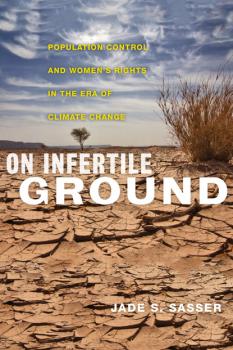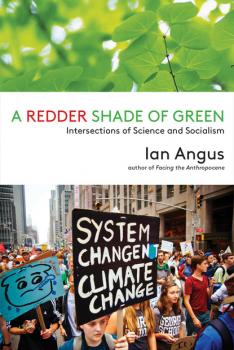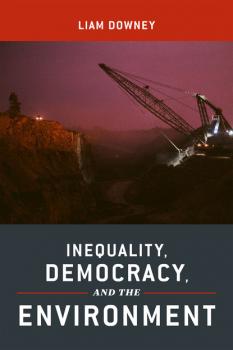ТОП просматриваемых книг сайта:
Биология
Различные книги в жанре Биология, доступные для чтения и скачиванияАннотация
A critique of population control narratives reproduced by international development actors in the 21st century Since the turn of the millennium, American media, scientists, and environmental activists have insisted that the global population crisis is “back”—and that the only way to avoid catastrophic climate change is to ensure women’s universal access to contraception. Did the population problem ever disappear? What is bringing it back—and why now? In On Infertile Ground, Jade S. Sasser explores how a small network of international development actors, including private donors, NGO program managers, scientists, and youth advocates, is bringing population back to the center of public environmental debate. While these narratives never disappeared, Sasser argues, histories of human rights abuses, racism, and a conservative backlash against abortion in the 1980s drove them underground—until now. Using interviews and case studies from a wide range of sites—from Silicon Valley foundation headquarters to youth advocacy trainings, the halls of Congress and an international climate change conference—Sasser demonstrates how population growth has been reframed as an urgent source of climate crisis and a unique opportunity to support women’s sexual and reproductive health and rights. ­Although well-intentioned—promoting positive action, women’s empowerment, and moral accountability to a global community—these groups also perpetuate the same myths about the sexuality and lack of virtue and control of women and the people of global south that have been debunked for decades. Unless the development community recognizes the pervasive repackaging of failed narratives, Sasser argues, true change and development progress will not be possible. On Infertile Ground presents a unique critique of international development that blends the study of feminism, environmentalism, and activism in a groundbreaking way. It will make any development professional take a second look at the ideals driving their work.
Аннотация
A socialist response to the looming ecological crisis [b][/b]As the Anthropocene advances, people across the red-green political spectrum seek to understand and halt our deepening ecological crisis. Environmentalists, scientists, and eco-socialists share concerns about the misuse and overuse of natural resources, but often differ on explanations and solutions. Some blame environmental disasters on overpopulation. Others wonder if Darwin’s evolutionary theories disprove Marx’s revolutionary views, or if capitalist history contradicts Anthropocene science. Some ask if all this worry about climate change and the ecosystem might lead to a “catastrophism” that weakens efforts to heal the planet. Ian Angus responds to these concerns in A Redder Shade of Green, with a fresh, insightful clarity, bringing socialist values to science, and scientific rigor to socialism. He challenges not only mainstream green thought, but also radicals who misuse or misrepresent environmental science. Angus’s argument that confronting environmental destruction requires both cutting-edge scientific research and a Marxist understanding of capitalism makes this book an essential resource in the fight to prevent environmental destruction in the 21st century.
Аннотация
Environment and Society connects the core themes of environmental studies to the urgent issues and debates of the twenty-first century. [/b][b] In an era marked by climate change, rapid urbanization, and resource scarcity, environmental studies has emerged as a crucial arena of study. Assembling canonical and contemporary texts, this volume presents a systematic survey of concepts and issues central to the environment in society, such as: social mobilization on behalf of environmental objectives; the relationships between human population, economic growth and stresses on the planet’s natural resources; debates about the relative effects of collective and individual action; and unequal distribution of the social costs of environmental degradation. Organized around key themes, with each section featuring questions for debate and suggestions for further reading, the book introduces students to the history of environmental studies, and demonstrates how the field’s interdisciplinary approach uniquely engages the essential issues of the present.
Аннотация
Sickened by the contamination of their water, their air, of the Earth itself, more and more people are coming to realize that it is capitalism that is, quite literally, killing them. It is now clearer than ever that capitalism is also degrading the Earth’s ability to support other forms of life. Capitalism’s imperative—to make profit at all costs and expand without end—is destabilizing Earth’s climate, while increasing human misery and inequality on a planetary scale. Already, hundreds of millions of people are facing poverty in the midst of untold wealth, perpetual war, growing racism, and gender oppression. The need to organize for social and environmental reforms has never been greater. But crucial as reforms are, they cannot solve our intertwined ecological and social crises. Creating an Ecological Society reveals an overwhelmingly simple truth: Fighting for reforms is vital, but revolution is essential. Because it aims squarely at replacing capitalism with an ecologically sound and socially just society, Creating an Ecological Society is filled with revolutionary hope. Fred Magdoff and Chris Williams, who have devoted their lives to activism, Marxist analysis, and ecological science, provide informed, fascinating accounts of how a new world can be created from the ashes of the old. Their book shows that it is possible to envision and create a society that is genuinely democratic, equitable, and ecologically sustainable. And possible—not one moment too soon—for society to change fundamentally and be brought into harmony with nature.
Аннотация
An exploration of the production and reception of nature and spirituality in America’s national park system America’s national parks are some of the most powerful, beautiful, and inspiring spots on the earth. They are often considered “spiritual” places in which one can connect to oneself and to nature. But it takes a lot of work to make nature appear natural. To maintain the apparently pristine landscapes of our parks, the National Park Service must engage in traffic management, landscape design, crowd-diffusing techniques, viewpoint construction, behavioral management, and more—and to preserve the “spiritual” experience of the park, they have to keep this labor invisible. Spirituality and the State analyzes the way that the state manages spirituality in the parks through subtle, sophisticated, unspoken, and powerful techniques. Following the demands of a secular ethos, park officials have developed strategies that slide under the church/state barrier to facilitate deep connections between visitors and the space, connections that visitors often express as spiritual. Through indirect communication, the design of trails, roads, and vista points, and the management of land, bodies and sense perception, the state invests visitors in a certain way of experiencing reality that is perceived as natural, individual, and authentic. This construction of experience naturalizes the exercise of authority and the historical, social, and political interests that lie behind it. In this way a personal, individual, nature spirituality becomes a public religion of a particularly liberal stripe. Drawing on surveys and interviews with visitors and rangers as well as analyses of park spaces, Spirituality and the State investigates the production and reception of nature and spirituality in America’s national park system.
Аннотация
Winner, American Sociological Association Section on Environment and Technology Allan Schnaiberg Outstanding Publication Award The world currently faces several severe social and environmental crises, including economic under-development, widespread poverty and hunger, lack of safe drinking water for one-sixth of the world’s population, deforestation, rapidly increasing levels of pollution and waste, dramatic declines in soil fertility and biodiversity, and global warming. Inequality, Democracy, and the Environment sheds light on the structural causes of these and other social and environmental crises, highlighting in particular the key role that elite-controlled organizations, institutions, and networks play in creating these crises. Liam Downey focuses on four topics—globalization, agriculture, mining, and U.S. energy and military policy—to show how organizational and institutional inequality and elite-controlled organizational networks produce environmental degradation and social harm. He focuses on key institutions like the World Bank, the International Monetary Fund, the U.S. Military and the World Trade Organization to show how specific policies are conceived and enacted in order to further elite goals. Ultimately, Downey lays out a path for environmental social scientists and environmentalists to better understand and help solve the world’s myriad social and environmental crises. Inequality, Democracy and the Environment presents a passionate exposé of the true role inequality, undemocratic institutions and organizational power play in harming people and the environment.
Аннотация
The surprising history of the Gowanus Canal and its role in the building of Brooklyn For more than 150 years, Brooklyn’s Gowanus Canal has been called a cesspool, an industrial dumping ground, and a blemish on the face of the populous borough—as well as one of the most important waterways in the history of New York harbor. Yet its true origins, man-made character, and importance to the city have been largely forgotten. Now, New York writer and guide Joseph Alexiou explores how the Gowanus creek—a naturally-occurring tidal estuary that served as a conduit for transport and industry during the colonial era—came to play an outsized role in the story of America’s greatest city. From the earliest Dutch settlers of New Amsterdam, to nearby Revolutionary War skirmishes, or the opulence of the Gilded Age mansions that sprung up in its wake, historical changes to the Canal and the neighborhood that surround it have functioned as a microcosm of the story of Brooklyn’s rapid nineteenth-century growth. Highlighting the biographies of nineteenth-century real estate moguls like Daniel Richards and Edwin C. Litchfield, Alexiou recalls the forgotten movers and shakers that laid the foundation of modern-day Brooklyn. As he details, the pollution, crime, and industry associated with the Gowanus stretch back far earlier than the twentieth century, and helped define the culture and unique character of this celebrated borough. The story of the Gowanus, like Brooklyn itself, is a tale of ambition and neglect, bursts of creative energy, and an inimitable character that has captured the imaginations of city-lovers around the world.
Аннотация
From reviews of the first edition (1994): "Extraordinarily well written . . . " –Contemporary Sociology "A readable chronicle aimed at a general audience . . . Graceful and accessible . . . " –Dollars and Sense «Has the potential to be a political bombshell in radical circles around the world.» –Environmental Action The Vulnerable Planet has won respect as the best single-volume introduction to the global economic crisis. With impressive historical and economic detail, ranging from the Industrial Revolution to modern imperialism, The Vulnerable Planet explores the reasons why a global economic system geared toward private profit has spelled vulnerability for the earth's fragile natural environment. Rejecting both individualistic solutions and policies that tinker at the margins, John Bellamy Foster calls for a fundamental reorganization of production on a social basis so as to make possible a sustainable and ecological economy. This revised edition includes a new afterword by the author.
Аннотация
Next to the nuclear industry, the largest producer of contaminants in the air, land, and water is the electronics industry. Silicon Valley hosts the highest density of Superfund sites anywhere in the nation and leads the country in the number of temporary workers per capita and in workforce gender inequities. Silicon Valley offers a sobering illustration of environmental inequality and other problems that are increasingly linked to the globalization of the world's economies. In The Silicon Valley of Dreams , the authors take a hard look at the high-tech region of Silicon Valley to examine environmental racism within the context of immigrant patterns, labor markets, and the historical patterns of colonialism. One cannot understand Silicon Valley or the high-tech global economy in general, they contend, without also understanding the role people of color play in the labor force, working in the electronic industry's toxic environments. These toxic work environments produce chemical pollution that, in turn, disrupts the ecosystems of surrounding communities inhabited by people of color and immigrants. The authors trace the origins of this exploitation and provide a new understanding of the present-day struggles for occupational health and safety. The Silicon Valley of Dreams will be critical reading for students and scholars in ethnic studies, immigration, urban studies, gender studies, social movements, and the environment, as well as activists and policy-makers working to address the needs of workers, communities, and industry.
Аннотация
Humanity in the twenty-first century is facing what might be described as its ultimate environmental catastrophe: the destruction of the climate that has nurtured human civilization and with it the basis of life on earth as we know it. All ecosystems on the planet are now in decline. Enormous rifts have been driven through the delicate fabric of the biosphere. The economy and the earth are headed for a fateful collision—if we don’t alter course.In The Ecological Rift: Capitalism’s War on the Earth environmental sociologists John Bellamy Foster, Brett Clark, and Richard York offer a radical assessment of both the problem and the solution. They argue that the source of our ecological crisis lies in the paradox of wealth in capitalist society, which expands individual riches at the expense of public wealth, including the wealth of nature. In the process, a huge ecological rift is driven between human beings and nature, undermining the conditions of sustainable existence: a rift in the metabolic relation between humanity and nature that is irreparable within capitalist society, since integral to its very laws of motion.Critically examining the sanguine arguments of mainstream economists and technologists, Foster, Clark, and York insist instead that fundamental changes in social relations must occur if the ecological (and social) problems presently facing us are to be transcended. Their analysis relies on the development of a deep dialectical naturalism concerned with issues of ecology and evolution and their interaction with the economy. Importantly, they offer reasons for revolutionary hope in moving beyond the regime of capital and toward a society of sustainable human development.










